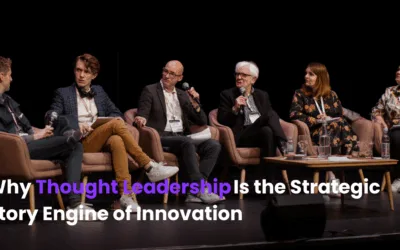There’s always plenty of jargon in the corporate world. In fact – there’s jargon in any discipline once it achieves a level of scale. The use of jargon means that teams and industrial sectors are working with a shared language and understanding. It means management can trust in the progress and reporting of teams and leaders and boards can focus on the governance and disciplines of the organisation. So when it comes to innovation velocity, we need to think through what it means and how it aligns within our business.
Now think about the concept of innovation. Again, there’s plenty of jargon but precious little shared agreement around its meaning. After all, just think about how many discussions you’ve had around the word “innovation”. There are so many great ideas and opportunities that have ended up being discarded simply because someone, somewhere, got caught up on the definition of “innovation”.
At a recent workshop, we had spent time prioritising and arguing for and against a particular solution for a challenging business problem. We had firm agreement on the scope and focus and were moving productively towards a shared vision. It was exciting.
And then, all of a sudden, there was that innovation question.
Was what we were discussing “truly innovative”?
With those two words, all of the energy evaporated from the room.
It was like we had, as a group, taken 10 steps backwards.
…
We have all been there.
This is the “innovation honey trap” that plagues teams and organisations of all sizes. From the smallest startup to the largest enterprise, the honey trap offers an often convenient way out of difficult discussions and is often raised by those who feel concerned about moving through a design or decision making process at velocity.
It’s not that they are worried about the SPEED. After all, we are all used to working in always-on, always connected worlds. The challenge for some of us is not the speed of decision making but its velocity while innovating.
What is the difference between speed and velocity?
While drinking coffee recently, my gaze drifted to the park over the road. There was a man working out with a personal trainer – boxing and jumping on the spot. I returned my attention to the coffee and when I looked up again I noticed that the man was now running in a circle around playground equipment. He was doing laps – and not very well. He was certainly expending effort and travelling some distance, but he did not seem to be making a difference. There was no progress towards a goal – except one that was known only by the all-knowing trainer.
Sure, my training friend had ticked a training box, but is that the end goal?
For me, velocity has a focus and direction. You can build speed running in circles, but when you have velocity, something else has to shift.
You can’t expect velocity to take a back seat – it puts you – and your organisation – out in front.
Velocity creates its own meaning
Realising that we were being derailed by the “innovation honey trap”, we were able to quickly refocus the team back towards the outcomes we were seeking. “That’s a great question – but it’s one that we can take offline and return to later”. For now, our focus was on maintaining the velocity of the group – generating hypotheses, connecting dots and building the confidence of the leaders in the group to make decisions with a sense of purpose, direction and velocity.
And by the end of the meeting we all agreed – we ended up with a wild solution to a wicked problem – and we never could have imagined that outcome at the beginning. The process teased and challenged us to envision a daring future for the organisation – and we created our own meaning – and some new jargon – in the process.
Remember – velocity wins. And even when it doesn’t it helps you pivot at speed until you regain velocity and the confidence it generates.



